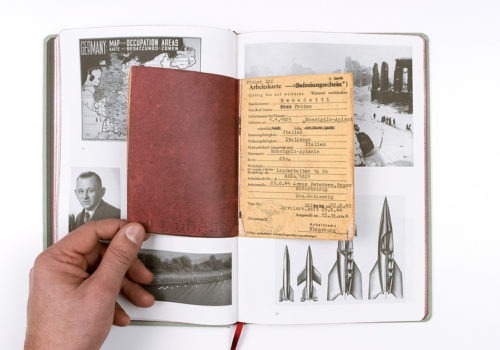As part of Athens Photography Festival 2015, under the title “Reframing Memory», four group exhibitions are presented: Afterlife, Recorded Memories, Memory Lab and Young Greek Photographers. Here is a selection.
Afterlife
Curated by Mauro Bedoni.
Laia Abril (ES), Andrea Botto (IT), Justin Maxon (USA)
To look at a photograph is to look at the past. As a simple representation of past sorrow and death, a photograph can make us suffer when we look at it. But when photography is particularly considered it builds a creative narrative flow and it sparks more than memory. It becomes a switch to cast new light on our present. Life after death. Afterlife.
In The Epilogue, Laia Abril tells the story of the Robinson family and the aftermath of losing their 26-year-old daughter, Cammy, to bulimia. Working closely with the family, Abril reconstructed the young woman’s life through flashbacks: memories, testimonies, objects, letters, places and images.
Andrea Botto’s 19.06_26.08.1945 was produced in memory of his grandfather’s journey home across Europe at the end of the Second World War: from Nazi prisoner-of-war camps in North Germany to his home in Tuscany. Dedicated to all the Italian Military Internees who shared this terrible experience, many of the project’s images were collected from the Internet by typing the names of the towns they passed through and the year. Others are taken from a small notebook that belonged to his grandfather, from his passport and from the letters he sent and received during his incarceration.
Heaven’s Gain by Justin Maxon is a study of the physical and psychological implications of gun violence – a deep investigation into the emotional, physical and spiritual landscape that emerges from the unresolved trauma of crimes not yet served by justice. With 300 unsolved murders in the last two decades, Chester, PA, USA is a microcosm of the structural and racial inequalities that pervade American society.
Recorded Memories
Following an initiative by the Goethe Institute, curator Constanze Wicke, supported by the heads of the Goethe Institutes and other curators in the participating countries of Southeast Europe set out in search of artists who examine the subject of “memories” in their work and who have made the dramatic history of the region and reflection on past and present conflicts in Southeast Europe the subject of their art.
The result is a remarkable collection of works (photographs, videos and installations), which confronts the viewer with different attitudes, approaches and evaluations. The exhibition may well be the only one of its kind to date in Europe: it has assembled the works of artists from Albania, Bosnia and Herzegovina, Bulgaria, Greece, Croatia, Macedonia, Moldova, Romania, Serbia, Turkey and Cyprus in a joint show. It thus revives memories and customs of remembrance which could not be more different from each other.
The exhibition was originally on view from May to September 2013 in the Museum of Photography in Braunschweig, before it went on tour through Southeast Europe, where – we hope – it will become the starting point for further artistic examinations of our shared history in Europe.
Young Greek Photographers
Since 1987, the “Young Greek Photographers” exhibition has been trying to constructively contribute to the effort of the new artists to present their work to a wider audience and bring forth the contemporary photographic production of the young and emerging artists of the country. As a proof of the importance of this initiation in the Hellenic photo scene is that a significant number of well known and established artists of today have been first shown at this exhibition.
In an era of global economic, social and environmental crisis, young photographers are searching for ways to surmount the impediments of every new start and test their abilities through the unique process of searching their artistic maturity. The works that are presented in this year’s exhibition have been selected out of more than 760 proposals, which proves a blooming of artistic production as well as the advancement of this art in Greece.
Diverse elements and multiple approaches are met through a pluralism of techniques and styles reflecting the freshness of a “new” point of view.
















